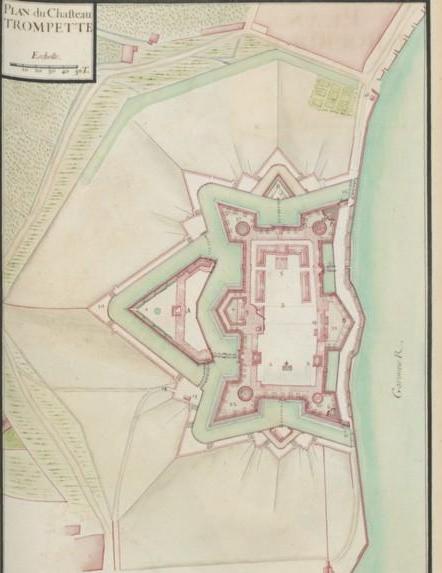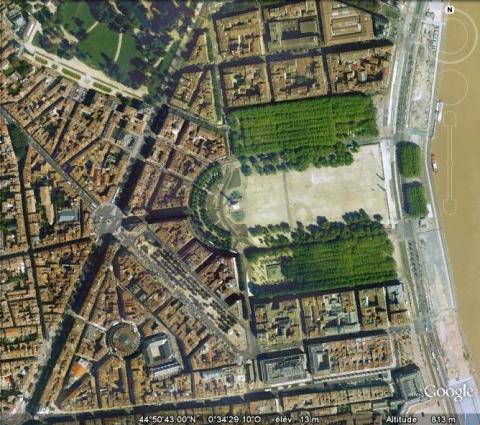Château-Trompette
History and description
The first château Trompette was constructed in 1453, at the same time as the Hâ castle, under the reign of King Charles VII of France following the expulsion of the English. However, this first castle could not withstand the Fronde troubles of 1648. It was restored by the engineer Nicolas d’Argencourt. In 1659, Louis XIV decided to reconstruct it and make it into a bastioned citadel with glacis, the latter of which formed a kind of esplanade. Two convents, one of Jacobins and the other of Saint Catherine, and numerous private houses were demolished to achieve this project. The construction of the second château Trompette commenced in 1664 and was finished eleven years later, completed by the fort de Sainte-Croix on the right bank of the Gironde. The Knight of Clerville was given the task of this reconstruction by Colbert and was responsible for designing the projects. The engineer and architect Nicolas Payen was the person supervising on-site. In 1680, Vauban’s attention turned to the weaknesses of the construction in terms of defending the river and the port of Bordeaux. He saw the need for fresh modernisation but abandoned the project in favour of focusing on the triptych of fortresses at Blaye downstream. The maximum intervention here was limited to a few minor rectifications.Described just as shown in the relief map of 1705 at a 1/200 scale, alas damaged in harsh restoration efforts in 1911, and preserved at the musée des Invalides in Paris, it was a rectangular fortress with six bastions (four at angles and two in the middle of the rectangular lengthwise section) and three ravelins (a large one in front of the main gate on the side facing the town and two other smaller examples, in the middle of the two longitudinal rectangular sections). Each angled bastion included a bastioned tower, which was probably intended as a shooting platform. In the inside, the fortress included a residence for the governor, barracks, guardroom, a chapel, etc. Its main feature is the decoration of the outer walls: plates in relief, scanned by decorative links.
Current state
There are no visible remains of the Château Trompette. Downgraded in 1785 by Calonne, a minister under Louis XVI, it was demolished the following year, despite this being opposed by the parliament and the local Bordeaux population. The Revolution put an end to these demolitions for a few years, but they restarted in 1797, under the Governing Council. In 1808, Napoléon I bequeathed the land and equipment to the town of Bordeaux, a cession which was continued by Louis XVIII. Some traces of the foundations were uncovered during maintenance work, but to document the appearance of this citadel, reference to the relief map preserved in the musée des Invalides is necessary, using the preserved elements linked to the restoration of this map. However, since it is made up of removable items, the buildings can be examined in detail.
Château-Trompette
Château-Trompette
44° 50' 43.2474" N, -0° 34' 26.2602" E
Type
citadel
Engineers
Pierre de Conty d’Argencourt, André de Serre, Louis-Nicolas de Clerville, Nicolas Payen, Nicolas Desjardins, Sébastien le Prestre de Vauban
Department
Gironde
Region
Nouvelle-Aquitaine
Bibliography
- LE BLANC (F Y), FAUCHERRE (N.), La route des fortifications en Atlantique. Paris, 2007.
- MARCH (A.), « Le Château-Trompette de Bordeaux et son décor architectural » in Bulletin monumental, 1996, n°154, p.317-327.
- MEALLET (A.), Promenades dans le Bordeaux du XVIIIe siècle, Bordeaux, 1979.
- REAU (L.), Les monuments détruits de l’art français, histoire du vandalisme, vol. 1, Paris, 1959, p. 157.
- WARMOES (I.), Le musée des plans-reliefs, Paris, 1997, p.57.

